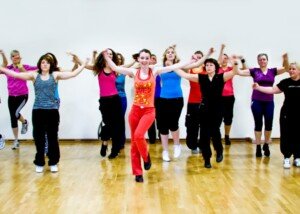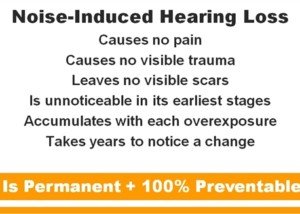
Loud “yoga music” during your yoga class is just as harmful to hearing as is loud pounding-type hip hop or rock music during a step aerobics class.
Yoga Instructor Is Also an Expert in Hearing Loss
“Loud is loud, regardless of the source, rock and roll or yoga type music,” says Rachel Raphael, M.A., CCC-A, who’s an audiologist (hearing loss specialist) with ENT Baltimore.
“Neither should exceed 85 decibels for any extended period,” says Raphael.
A decibel (dB) is a unit of sound volume. There are yoga classes out there in which the ethereal music is set to at least 85 dB.
Though there’s no dB meter to measure this, it’s not necessary to know the music is loud. That’s because it’s loud.
At my last yoga class I had to wear earplugs—which impeded my ability to hear instructions. But this doesn’t solve the problem, as I need to hear the instructions.
As any yoga practitioner knows, many poses involve the head being down or turned away from the instructor.
So watching the instructor (when earplugs impede hearing her) does not solve the loud music problem.
I can always keep my eye on the person next to me, but I don’t like the idea of keeping my eyes trained on the person next to me.
My goal is to NOT watch anybody and just use the spoken instructions as my cue once I learn the names of all the poses. Wearing earplugs will hinder that.
Why do you take yoga?
Many yogis do it for health. Some take a class right after their strength training session or jogging stint on a treadmill.
Funny, why would your health consciousness exclude your ears? I don’t get this.
Why be interested in preserving the health and virility of your heart, muscles, joints, bones and brain – but not the nerve cells inside your ear that conduct sound signals to your brain?
Can’t say it enough: I don’t get this.
Yoga music or any kind of sound that’s over 85 dB for an hour is “dangerously loud,” says Raphael, who teaches BodyFlow (yoga, tai chi and Pilates combined).
She explains, “I never blast the music. I think it would go against the essence of the calm atmosphere I’m trying to create (along with dimmed lights and a calm soothing instructional voice).
Not to mention, I would never want to cause permanent hearing loss damage in my participants’ ears.”
New to yoga, I’ve taken six classes thus far at two different health clubs. The second health club has been having difficulty retaining the same instructor—at least for the Tuesday evening class.
So for the three classes I’ve taken there, the instructor has been two women and a video.
The first woman had the music set at a safe volume, and NOBODY COMPLAINED it was too soft.
For the video on a large screen, an employee set the volume, again, at a comfortable safe level. Nobody complained they couldn’t hear it.
The second woman, however, immediately had it up to what seemed like 85 dB.
It wasn’t blaring, but it was loud. Soon into the instruction, she actually increased the volume! WTF!
Nobody requested this. She took it upon herself to do it.
I noticed that only one person in the full class had a weight problem. Most of the students did well with the poses.
In other words, the level of collective fitness in this particular yoga class was much higher than in a random group of same-age people off the street.
Yet I’m betting if I had asked the instructor to lower the music, everyone would have thought I was strange.
These are the same people who, after this class, probably ate an organic salad, a fruit platter or went to the weight machines.
I don’t get this.
Next time I see this instructor I’m going to request – before she starts the yoga class – that she play the music soft. I’m betting she’ll look at me funny while she’s sipping her purified water.
For more information on the hearing loss threat of loud noise, check out these facts from a doctor.










































